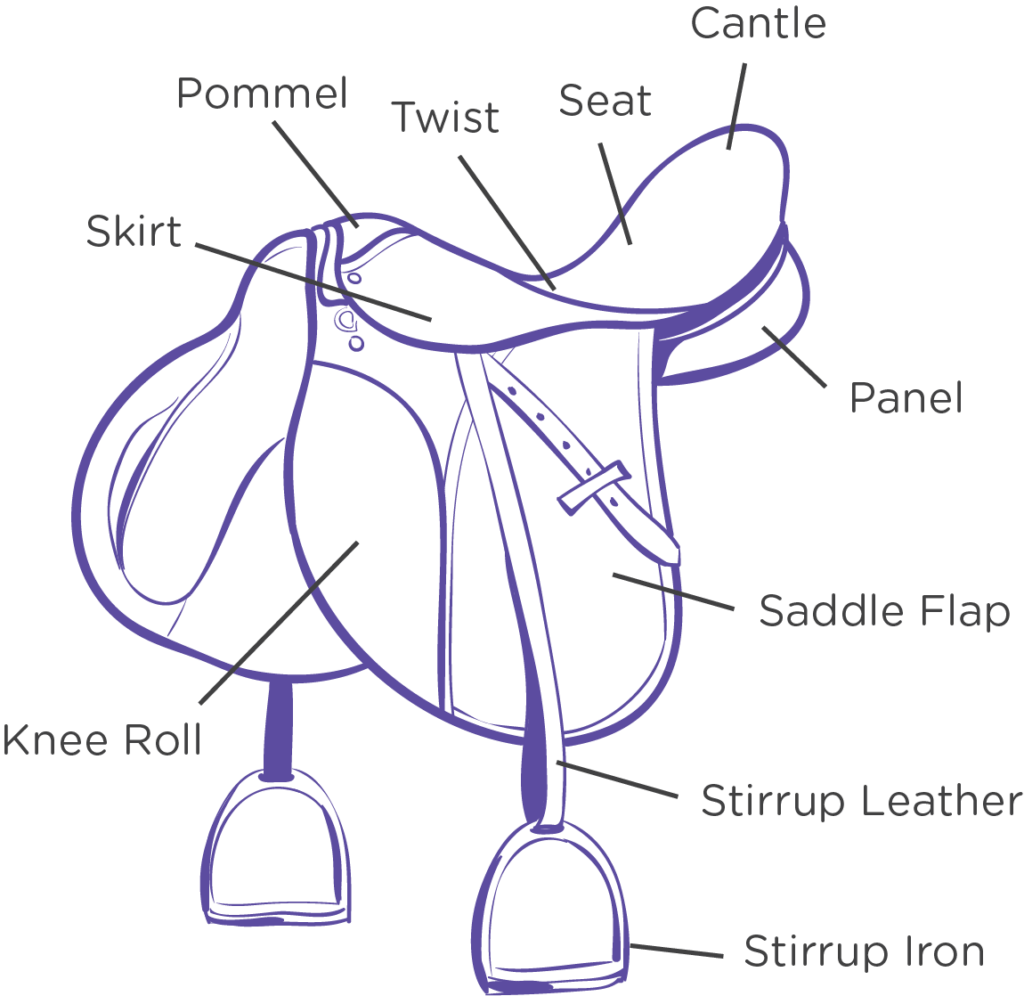41 horse saddle diagram
Rigging is essentially a set of D-rings, cinch-straps, cinch (AKA western saddle girth), latigo, and billets. Collectively, this system plays the role of keeping the saddle firm and fixed on the horse’s body. Saddle Strings. The saddle strings are sometimes used for rigging horse winter blankets but usually are among the decorative saddle parts. Saddle Pads Horse Blankets Headstalls and Bridles Breast Collars Bits Cinches, Girths & Tie Straps Flank Straps Reins Stirrups and Fenders Halters and Lead Ropes Protective Gear Show Headstalls-Breast Collars-Halters Spurs and Spur Straps Riding Helmets Horse Training and Safety Equipment
Horse Illustrated is the magazine for people who are passionate about horses. Each issue offers advice on horse health and care, plus user-friendly training tips for both English and western riders and engaging lifestyle features for horse lovers.

Horse saddle diagram
Danada Equestrian Center uses the western saddle in its lesson program when teaching individuals how to ride a horse. The western saddle keeps the rider (especially a beginner!) secure in the seat. It distributes the rider’s weight across the horse’s back. The western saddle is built on a wooden tree. When a horse stands square, they should have a shoulder angle between 40 and 55 degrees. At this angle, the horse’s elbow is directly below the front of the withers. The elbow should be parallel to the horse’s body. Horses with straighter shoulders and pastern angles tend to have shorter strides. Muzzle: the muzzle comprises of the chin ... Below is a brief description of the parts of a Western saddle. They are in order, more or less, from the top of the saddle to the bottom. Fork / Swells / Pommel - This area, as you can tell, goes by several names. In a Western saddle this area is commonly referred to as the fork or swells, and is occasionally referred to as the pommel.
Horse saddle diagram. Q: My horse has high withers (low withers, a flat back, etc). Is there a superior type of rigging? A: Generally, no. The rigging of the saddle has little to do with how the saddle fits over your horse's back. The gullet width and angle of the bars of the saddle are the most important aspect of saddle fitting. with more related things as follows blank horse parts worksheet, part western saddle fill in blank worksheet and horse labeling worksheet. We have a dream about these Saddle Worksheets Printable pictures gallery can be a resource for you, bring you more examples and of course make you have bright day. The distance between each side of the hanger will be your horse’s gullet width. On the underside of the saddle, find the two parallel panels. You should see four felt knots embedded in the panels towards the front of the saddle. Measure the distance between the two knots that are closest to the gullet on each panel. Learn more about the parts of a saddle. Saddles are actually very complex creations that can be handcrafted and customized to fit each unique horse and rider pair. It’s important for all horsemen and horse-women to know and understand how their saddles work. Part of this understanding comes from knowing about the design and the parts of the saddle.
1. Here is a skeletal diagram showing the proper saddle support area with respect to a horse’s rib cage. 2. I am pointing to the last supporting rib on a horse with a saddle that fits properly within the boundaries of the saddle-support area for this particular horse. 3. The gullet of the saddle is one of the most crucial parts. It holds the bars of the saddle together and its angle determines how the saddle is going to fit the horse. If the angle of the saddle bars is too wide and the gullet height too … Below is a brief description of the parts of a Western saddle. They are in order, more or less, from the top of the saddle to the bottom. Fork / Swells / Pommel - This area, as you can tell, goes by several names. In a Western saddle this area is commonly referred to as the fork or swells, and is occasionally referred to as the pommel. When a horse stands square, they should have a shoulder angle between 40 and 55 degrees. At this angle, the horse’s elbow is directly below the front of the withers. The elbow should be parallel to the horse’s body. Horses with straighter shoulders and pastern angles tend to have shorter strides. Muzzle: the muzzle comprises of the chin ...
Danada Equestrian Center uses the western saddle in its lesson program when teaching individuals how to ride a horse. The western saddle keeps the rider (especially a beginner!) secure in the seat. It distributes the rider’s weight across the horse’s back. The western saddle is built on a wooden tree.

Image from page 139 of "Turf goods : fine harness, saddles, trotting and running horse outfits" (1892)

I recently did a photo shoot for a friend and her best pal Fiesta. This was one of the favorites out of the 200 photos taken.































Comments
Post a Comment